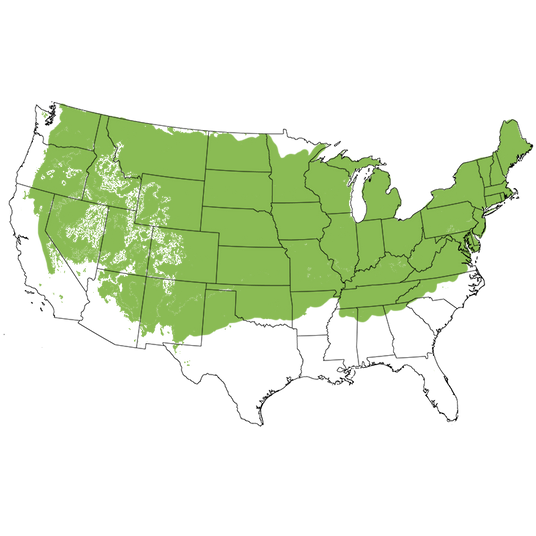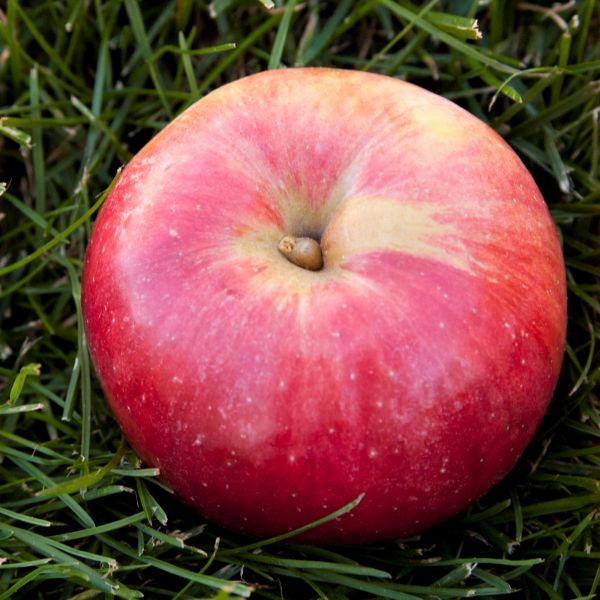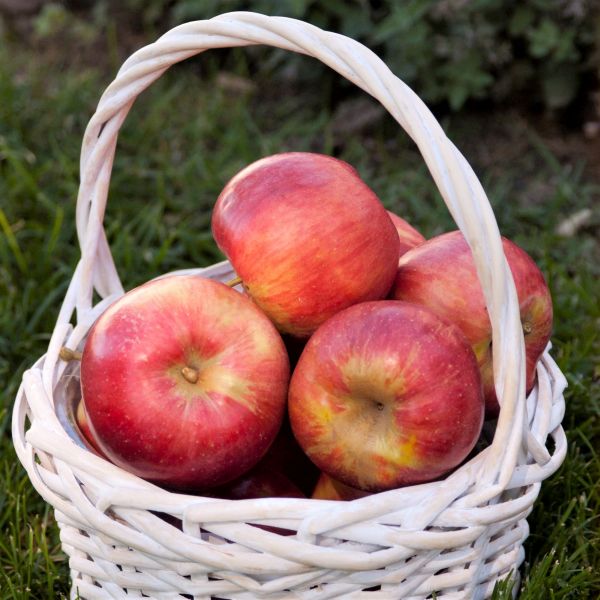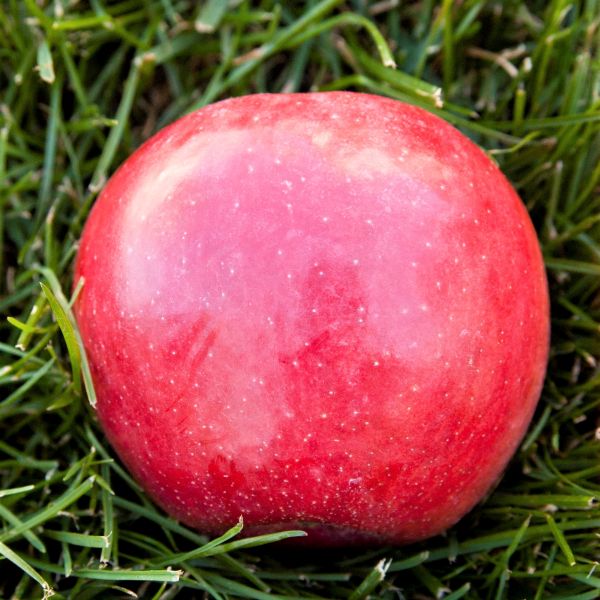Fireside Apple Tree
Malus 'Fireside’
- Stay Protected with Plant Sentry ™
Fireside Apple Tree - #3 Container 4-5 Feet is backordered and will ship as soon as it is back in stock.
Plant Sentry™
Plant Sentry™

Plant Sentry™ Protected
Your order is protected by our compliance system that:
- Prevents restricted plants from shipping to your state
- Ensures plants meet your state's agricultural requirements
- Protects gardens from invasive pests and diseases
Delivery and Shipping
Delivery and Shipping
Delivery and Shipping
Fast, Safe Plant Delivery
Ships in 3-4 business days • Tracking provided • Weather protected
| Under $50 | $9.99 |
| $50 - $99.99 | $14.99 |
| $100 - $149.99 | $16.99 |
| $150 - $198.99 | $24.99 |
| $199+ | FREE |
✓ Zone-specific timing • ✓ Professional packaging • ✓ Health guarantee
Understanding Plant Options
Nature Hills offers plants in two main formats:
- Container Plants: Grown in pots with soil, sized by container volume and plant age
- Bare Root Plants: Dormant plants without soil, sized by height measurements
Container Plant Sizes
Container sizes indicate plant age and growing capacity rather than liquid volume equivalents. Our containers follow industry-standard nursery "trade gallon" specifications, which differ from standard liquid gallon measurements.
Young Plants (6 months to 18 months old)
| Container Size | Actual Volume | Metric Equivalent |
|---|---|---|
| 2" x 2" x 3" | 0.18 - 0.21 dry quarts | 0.20 - 0.23 dry liters |
| 4" Container | 0.31 - 0.87 dry quarts | 0.35 - 0.96 dry liters |
| 4.5" Container | 0.65 dry quarts | 0.72 dry liters |
| 6" Container | 1.4 dry quarts | 1.59 dry liters |
| 1 Quart | 1 dry quart | 1.1 dry liters |
| 5.5" Container | 1.89 dry quarts | 2.08 dry liters |
Established Plants (18 months to 2.5 years old)
| Container Size | Actual Volume | Metric Equivalent |
|---|---|---|
| 2 Quart | 2 dry quarts | 2.2 dry liters |
| #1 Container | 2.26 - 3.73 dry quarts | 2.49 - 4.11 dry liters |
| 5" x 5" x 12" | 3.5 - 4.3 dry quarts | 3.85 - 4.74 dry liters |
Mature Plants (2-4 years old)
| Container Size | Actual Volume | Metric Equivalent |
|---|---|---|
| #2 Container | 1.19 - 1.76 dry gallons | 5.24 - 7.75 dry liters |
| #3 Container | 2.15 - 2.76 dry gallons | 8.14 - 12.16 dry liters |
Large Plants (3-5 years old)
| Container Size | Actual Volume | Metric Equivalent |
|---|---|---|
| #5 Container | 2.92 - 4.62 dry gallons | 12.86 - 20.35 dry liters |
| #6 Container | 5.25 - 6.01 dry gallons | 23.12 - 26.42 dry liters |
| #7 Container | 5.98 - 6.53 dry gallons | 26.34 - 28.76 dry liters |
Bare Root Plants
Bare root plants are sold by height from the root system to the top of the plant. Plants may exceed minimum height requirements.
Common Sizes:
- Trees: 1 foot, 2 feet, 3 feet, 4 feet, 5 feet, 6 feet
- Shrubs & Perennials: 1 foot, 18 inches, 2 feet
Important Notes
Container Volume Specifications
- Trade Gallon Standard: Our containers follow industry-standard "trade gallon" specifications established by the American National Standards Institute (ANSI Z60.1) for nursery stock
- Volume Variations: Actual soil volume may vary due to plant root systems and growing medium settlement
- Age Indicators: Container size primarily indicates plant age and maturity rather than liquid volume equivalents
Growing Conditions
- Plant size can vary based on variety and growing conditions
- Container size helps indicate plant maturity and establishment level
- Larger containers generally mean more established root systems and faster landscape establishment
Seasonal Availability
- Bare root plants are available seasonally when dormant
- Container plants are available throughout the growing season
- Specific varieties may have limited availability in certain sizes
Questions?
For questions about specific plant sizes or availability, please contact our plant experts who can help you choose the right size for your landscape needs.
Plant Highlights
Fireside Apple Tree highlights at a glance!
-
Botanical Name
-
Brand
-
Growing Zones4, 5, 6, 7
-
Growth RateModerate
-
Mature Height
-
Mature Width
-
Leaf Color
-
Flower Color
-
Fall Color
-
Pollinator FriendlyYes
-
Pollinator Required
-
Bloom PeriodLate Spring
-
FragrantYes
Characteristics
Where To Plant
When To Prune
- Late Winter
Water & Moisture Needs
- Moderate
Sunlight Needs
Soil Needs
- Widely Adaptable

Growing Zones
Perfect Dessert Apple From the 40's - Fireside Apple Tree!
- Red Skinned Fruit With Yellow Streaks & White Flesh
- Delicious Dessert Apple
- Sweet & Juicy & Crisp!
- Smaller Rounded Growth
- Pink Buds Open to Fragrant White Blooms
- Easy to Grow!
- Fresh Eating, Cooking, Baking, Preserves & Canning
- Handles Cold Winters
- Pollinators are Jonathan, Honeycrisp or Golden Delicious
- Pointed Foliage With Yellow Fall Color
- Ornamental Rounded Form
- Beautiful Small Space Ornamental & Specimen Tree
- Edible Gardening
- Low Chill ~400 Hours
- Low Canopy & Adaptive to Pruning!
You've probably heard the saying "An apple a day keeps the doctor away." Apples have the (deservedly) good reputation of being a healthy snack. But sometimes...well...you want lots of sugar and cinnamon with a shot of ice cream on the side!
Fireside Apples (Malus 'Fireside') have been a staple in bakery pantries since 1943, so they have stood the test of time as the perfect Apple for sweet dessert dishes.
Pies and baked goods, preserved, juiced or fresh, these are incredibly enjoyable and versatile fruit!
This easy-to-grow Apple tree is enjoying a resurgence in home gardens because of its sweet taste and because it doesn't even shudder at bitter-cold winters. (It is a Minnesota native after all.)
The red and yellow fruit take on more and more red and yellow stripes as they mature. Ripening in early October right when a gooey apple crisp would be so welcome as you warm up by the fire. (Maybe that's where the name came from?)
Spring brings a lovely display of pink buds that burst open into beautiful white blooms that are fragrance pollinator magnets!
These firm, red striped apples are medium-sized and easy to pick. They eat great fresh-out-of-hand with their juicy-sweet taste so they make for great family picking in the fall.
How to Use Fireside Apple Tree In The Landscape
The tree itself is perfectly sized for the backyard garden, but it does need a pollinator to produce at its best. You'll want to pick another early or mid-season variety like Honeycrisp, Jonathan or Golden Delicious Apple varieties.
Prune smaller or even as Espalier if desired for a unique focal point tree! The spring blossom explosion is reason enough to place this specimen tree front and center in your property!
Tolerant of urban conditions and some pollution, these make great trees for any property site. Create rows of these lovely trees for property definition and privacy that your neighbors won't mind.
Dual-purpose and edible landscaping has never been so easy! Ornamental enough to beautify your landscape, hardy and functional, plus fresh apples straight from the tree providing your family healthy food grown on your terms!
Fantastic patio shade tree and anchor to larger planting beds, these are beautiful trees with spring blooms, handsome summer foliage, fall color and of course, those delicious red gems that will be dangling in autumn!
Perfect apples for all the reasons you'd want a sweet apple for! Juice it and turn into cider, make preserves, chutney for canning, blue ribbon pies and baked goods, or serve up with a nice cheese and wine tray around the fire!
#ProPlantTips For Care
All fruit trees do need full sun for the most blooms and therefore most fruit. Cold hardy in growing zones 4-7, they prefer an organically rich, well-drained soil to grow in with a good layer of mulch over the root system to insulate and retain moisture.
While adult trees are drought-tolerant, you shouldn't let your investment suffer too long without water. You'll have increased yield and juicy fruit with a consistent watering cycle.
Prune if needed to control the shape. These have shown great resistance to cedar apple rust and don't mind city and urban environments.
Low chill hour requirements despite its tolerance of cold winters, Fireside needs 400 hours of cold to fruit.
Nature Hills is proud to deliver the highest quality plants and Fireside Apple Trees are no exception. Order yours today!
Fireside Apple Tree Frequently Asked Questions
When to Plant Fireside Apple Trees
Planting Bareroot trees as soon as you can dig a hole in spring and until hot weather, the earlier the better. Plant container Apple trees throughout the growing season with complete success - that is the benefit of container plants - to extend the planting season. Your County Agricultural Extension Office is a great resource for first and last frost dates in your area.
How to Plant Fireside Apple Trees
Dig a large hole only as deep as needed to accommodate the bareroot or container root ball, and twice as wide. Add Nature Hills Root Booster to speed root establishment. Remove the pot or bag and situate it into the hole so the top of the soil (soil line if bareroot), is level with the new location's soil being careful not to plant too deep. Water in again very well and backfill with the same soil you dug up, tamping down gently to ensure there are no air pockets.
Top off with a 3-4 inch thick layer of Arborist mulch. Consider staking your tree to keep its trunk growing straight for the first year to ensure it stands tall against strong winds and drifting snow.
When to Prune Fireside Apple Trees
Trim off any broken branches from delivery as soon as you take them out of the box. Prune and trim apple trees while dormant, in late winter or early spring, before you see new growth.
How to Prune Fireside Apple Trees
Dormant prune to:
- Remove any double leaders or narrow crotch angles
- Eliminate any crossing branches
- Thin interior branching and leave the fruiting spurs and strong branches in place opening up the canopy
- Branching at least 24-36 inches above the ground
Prune Apple trees in the summer to:
- Control size and shape by reducing the length of longer new growth on vigorous trees
- Remove water sprouts on the main trunk or older branches in the crown
- Remove suckers at the base of the trunk
- Thin fruit during heavy years on established trees
How to Care for Fireside Apple Trees
Growing an apple tree is easy when proper soil, good drainage, attention to moisture, and regular fertility are maintained. Once you've chosen an apple tree that works for your climate, in the size you need for your landscape, and its pollinator (if needed), then you've accomplished half the battle!
- Apple trees do best in full sun and well-drained soil
- Water your apple trees when it gets dry - especially during the fruit production stage, and drought periods to keep it stress-free
- Use arborists' wood chips to mulch over the roots of your apples and have your soil tested to see what your soil may be lacking before adding fertilizers
- Maintenance pruning and shaping
Apple trees will tolerate a wide range of soils, so long as water and nutrients are not limited and the pH level is adequate.
How to Fertilize Fireside Apple Trees
For the first year, water alone is most important. It is always best to get a soil test to see what your soil is lacking before adding more fertilizers. Once established, a fertilizer routine may be beneficial. We do offer some excellent slow-release organic options, applied according to the package directions.
Fruit trees need more phosphate and it's possible to apply too much nitrogen which affects the soil's pH. Test soil acidity or alkalinity using a pH Tester.
Fertilize in spring when you first see new growth emerging.
- Don't overdo it
- Phosphates are your friends
- Pay attention to pH in areas with extremely high or low soil pH
- Follow the directions
Fireside Apple Tree Pollinating Info
Fireside is not self-fruiting and needs a pollinating partner. Pair with one of these varieties:
Harvest Times for Fireside Apple Trees
Fireside’s are typically ready to harvest in October.
Early-Season? Mid-Season? Late-Season? The terminology can be confusing for new apple tree growers. Weather, climate and your tree determine when it's ripe.
For Apples:
- Early-season is usually June-July
- Mid-season can be August-September
- Late-season can be from late September-November
The growing season consists of spring, summer, and fall, and varies with climate and weather. Areas with longer growing seasons in the warmer hardiness zones can greatly affect the harvest times for each particular apple variety grown in your area. Learn which growing zone you are in.
What Shipping Options Do You Offer?
NatureHills.com works closely with our growers and nursery professionals to ensure we ship when it is most appropriate for your area. Our goal is to deliver the hardiest plants by avoiding extreme high and low temperatures. Check out our shipping schedule for more information and to learn our wills and won'ts when it comes to shipping plants. Find your Fireside Apple Tree for sale here at NatureHills.com!












